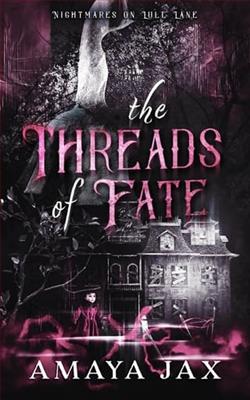Page 125 of Resurrection Walk
Before Bosch responded to confirm that he understood my plan, the judge emerged from chambers and I had to turn off the phone. Coelho got right down to business.
“All right, back on the record withSanz versus the State of California,” she said. “Continuing the habeas hearing. Gentlemen, is there any new business to discuss before I make rulings on the motions before the court?”
I half expected Morris to try to continue the arguments he’d made in chambers, though it was pretty clear the judge was past all that and ready to rule. But Morris declined to add anything to the record, and I had nothing to add either. I looked at Lucinda and gave her an encouraging smile, but she didn’t know how important the next few minutes would be.
“Very well,” the judge said. “In regard to the motions brought before the court this morning, let’s start with the State’s contention that the evidence is inadmissible because of contamination and mishandling by the lab that conducted analysis of the gunshot-residue pad submitted by the defense. The fact pattern shows that the contamination by a lab tech occurred several years ago when the evidence was submitted under different circumstances and protocols. The contamination did not occur during the most recent analysis conducted. It also should be noted that the tech’s DNA exemplar was available for comparison, as it is standard practice in certified DNA labs to check findings for contamination by lab personnel.”
I could tell that Morris’s contamination argument was not going to carry the day. The judge was going to shoot it down. I began to get the stirrings of hope and excitement.
“I believe that what is most important here is not whose DNA was found on the evidence but whose wasn’t,” Coelho said. “The petitioner’s DNA was not found on the evidence and that is as troubling to the court as it is exculpatory to the petitioner.”
I looked at Lucinda. It was clear she could not follow the legalese threaded through the judge’s words, but I gave her a half smile of reassurance. So far, this was going our way.
“Something was wrong about this case and the investigation from the very start,” the judge continued. “And it is the court’s hope that a proper investigation of the investigation will follow these proceedings. However, the court is also troubled by the petitioner’s defense in regard to the original charges against her.”
And now I felt it. The other shoe was going to drop. The judge was not going to allow the evidence into her ultimate decision on the petition.
“The foundation of the habeas corpus motion is to bring forth new evidence that proves the unlawful detention of the petitioner,” Coelho said. “I’m sorry to say, this evidence is not new. It has been sitting undisturbed in a lab for five years, and it clearly could have been accessed and tested for the petitioner’s DNA from the very beginning of the prosecution of the case. The claim by the petitioner that touch DNA was unavailable at that time is not correct. There are notable criminal cases involving the use of touch DNA much earlier than this, including the Casey Anthony case in Florida and the JonBenét Ramsey investigation in Colorado. So the court must decide whether this evidence is new or if it was available to be pursued and analyzed five years ago, before the petitioner’s plea of nolo contendere to the crime.”
I couldn’t believe this. I lowered my head, I could not even turn to look at my client.
“The court finds the latter,” Coelho said. “This evidence could have, possibly should have, been pursued by the defense five years ago and is therefore excluded from these proceedings. The petitioner may very well be left with a valid claim of ineffective assistance of counsel regarding the initial pleading of this case, but that is not part of this motion and hearing.”
I shot up out of my seat.
“Your Honor, those cases you mentioned are outliers,” I said. “They were massive investigations that took time and money. This science wasn’t used in more ordinary cases. The original attorney on this was ineffective, yes, but not in this regard. No one was using it then.”
“But someone could have, Mr. Haller,” Coelho said. “And that’s the point.”
“No! You’re not doing this.”
The judge looked at me for a moment, stunned by my outburst.
“Excuse me, Mr. Haller?” she finally said.
“You can’t do this,” I said.
“I just did, Mr. Haller. And you need to —”
“It’s wrong. I object. It is proof of innocence, Judge. You can’t just throw it away because it doesn’t fit with the rule of law.”
The judge paused, then continued in an even tone.
“Mr. Haller, be careful,” she warned. “The ruling has been made. If you think it is in error, then there are remedies you can pursue. But don’t you dare challenge me here. If you have another witness, then call that person to the stand and we will proceed.”
“No, I won’t,” I said. “This is a sham. You killed the re-creation, and now you kill this. My client is innocent and at every turn you have disallowed the evidence that proves it.”
The judge paused for a moment, but her anger toward me did not abate. It seemed to boil up into her eyes. She stared daggers at me.
“Are you quite finished, Mr. Haller?”
“No,” I said. “I object. The evidence is new. It’s not five years old. It was determined in a lab this morning. How can you claim it’s not new and send this woman, the mother of a young boy, back to prison for a crime she didn’t commit?”
“Mr. Haller, I will give you one chance to sit down and close your mouth,” Coelho said. “You are dangerously close to being in contempt of this court.”
“I’m sorry, Your Honor, but I won’t be muzzled,” I said. “I must speak the truth because this court will not. You kicked out the crime re-creation, and that’s okay, I can live with that. But the DNA… the DNA proves that my client was set up for this murder. How can you sit there and say it’s inadmissible? In any other court in this country, it would be proof of —”
“Mr. Haller!” the judge yelled. “I warned you. I find you in contempt of this court. Marshal, take Mr. Haller into custody. This is a federal court, Mr. Haller. Talking back to the court and insulting its rulings might work for you in state court, but not here.”















